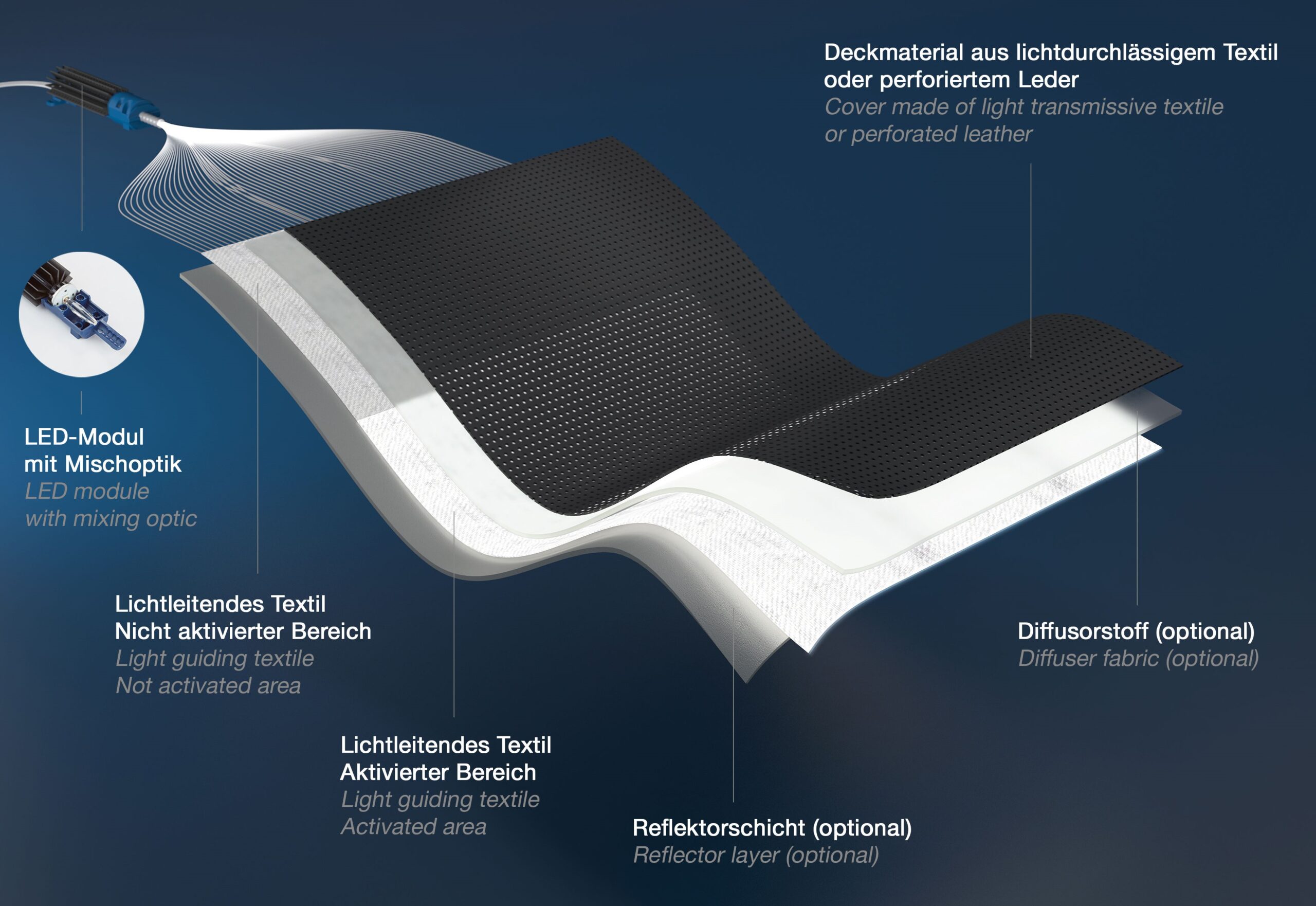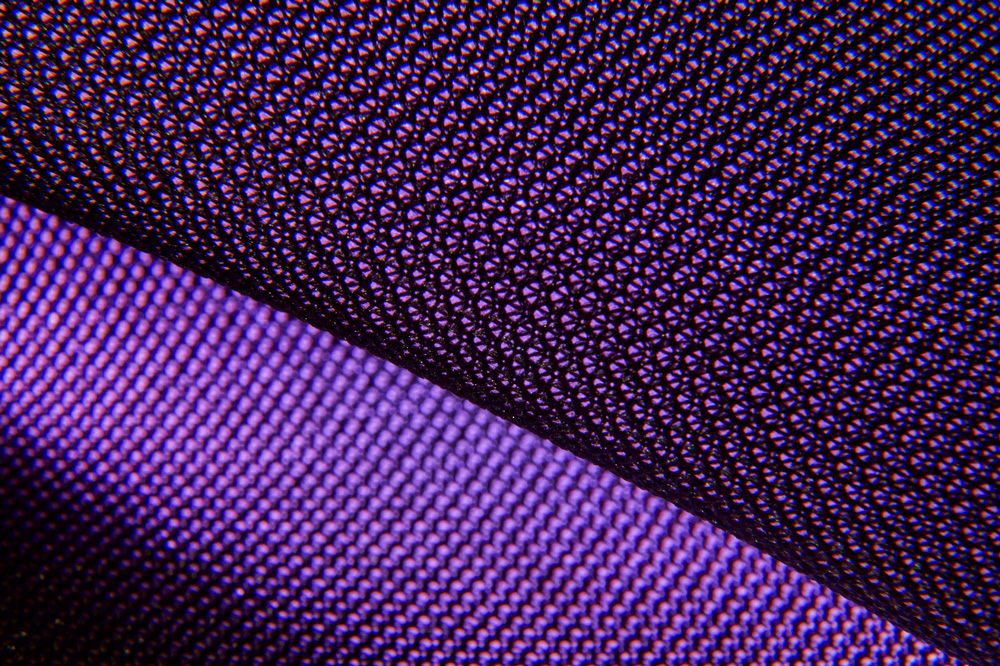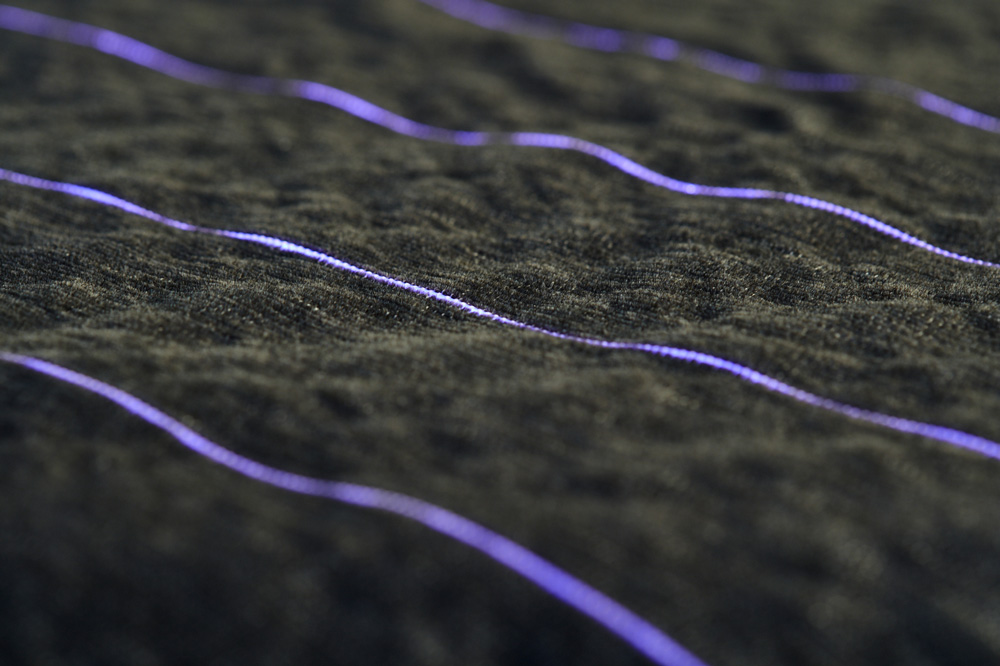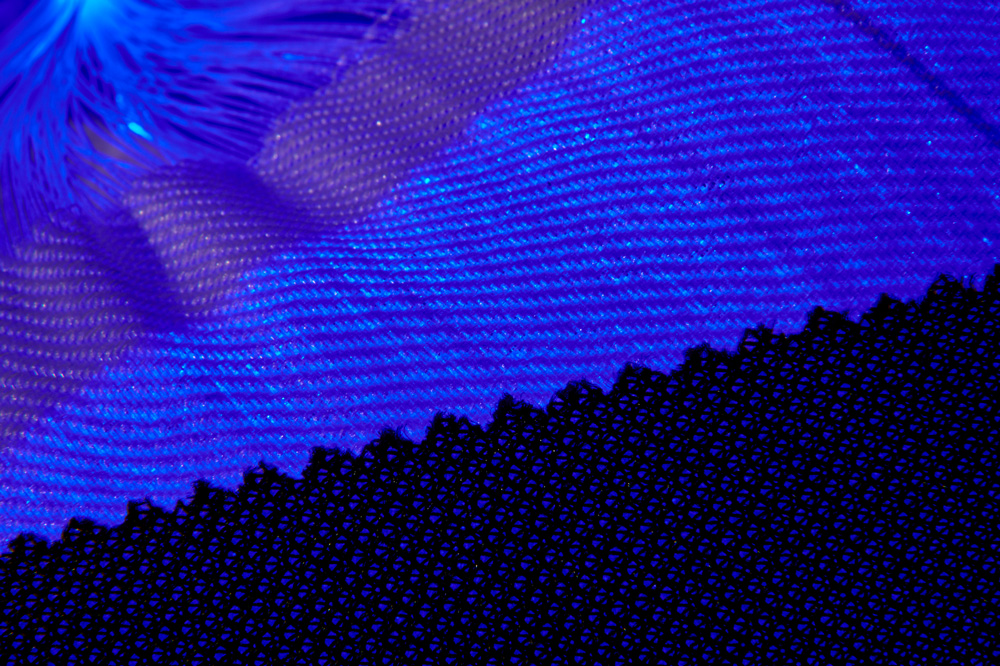How lighting through fibres works
The basic design of textile lighting systems consists of an LED light source and a textile material – individual fibres or a fabric that acts as a light guide. The light is usually emitted at the side of the fibre or fabric (lateral emission). The emission is activated at the desired light output points, i.e. the fabric is provided with individual light-scattering surface structures. However, if preferred, the light can also be output at the end of the fibres (axial emission). To this end, clear plastic optical fibres (POFs) made from PMMA are used, which, as weft threads, are woven with warp threads made from white polyester to form light-guiding fibre mats.
At the light input, one or more LED modules are connected by bringing together the individual fibres into a ferrule. A diffusor and top fabric are placed over the light-guiding fibre mat and a reflector is placed under it. The LED modules specially designed for use in textile lighting systems usually consist of several components: the LED light source – monochrome, white or RGB – the LED driver and thermal elements. The module housing, with a socket to connect the ferrule containing the individual light-guiding fibres, has a special mixer optic. The mixer optic ensures that the LED’s light is distributed optimally to all polished fibre ends in the ferrule.

Examples of possible applications
The name “textile lighting systems” comes from the fact that textiles are used as the light guide; it is not because they are used in textile applications. Nevertheless, because of their extensive flexibility, textile lighting systems are ideal for integrating light into textiles – but can be used in other ways too.
Using integrated lighting solutions, textile surfaces can be backlit, for example for decorative purposes, for branding through illuminated logos or as a safety function if clothing is to light up actively rather than just reflect light. Other exciting applications are lighting in piping and edging, light tracers in textiles and perforated leather backlighting. If multiple LED modules are used to feed in the light, impressive dynamic lighting scenarios are possible.
Product-integrated textile lighting systems can be used in many different products: examples are seats in cars and HGVs, seats on buses, trains and boats, wall and machine coverings, upholstered furniture and clothing. In addition to their use in textile end products, light-guiding fibre mats can also be used in non-textile end products, providing solutions for complex installation space situations where other technologies are not suitable.
Strengths, limits and alternatives
Textile lighting systems are flexible and drapeable, i.e. spherically deformable. This very quality provides a major advantage for system integration in a wide variety of applications. This, and their very flat structure, is opening up whole new possibilities for designers and allowing developers to work very flexibly where installation space is often tight. As our textile lighting system technology requires minimal component-specific tool costs, it allows short development times for us and our customers and is suitable even for quantities where tool-based technology is not cost-effective. Depending on the particular demands of the specific customer application, or the costing requirements if there are large quantities, other lighting solutions based on our M-Fibre side light fibre system, plastic injection moulding or 2D light guide systems are a good alternative.
About MUNDA
MENTOR’s textile lighting solutions are developed at MUNDA. MUNDA Textile Lichtsysteme GmbH in Erkrath, Germany is a joint venture between MENTOR and the automotive textile specialist AUNDE. It combines AUNDE’s expertise in technical textiles and MENTOR’s experience in LED lighting technology. Armed with this know-how, MUNDA develops textile lighting solutions for both parent companies.
About AUNDE
Founded in Mönchengladbach, Germany in 1899, AUNDE, with its brands AUNDE, ISRINGHAUSEN and FEHRER, produces yarns, technical textiles, foams, seat covers, seats, technical springs and interior modules for leading automotive manufacturers worldwide. AUNDE has more than 24,500 employees and produces goods in 117 factories in 29 countries worldwide.


